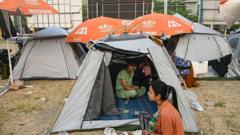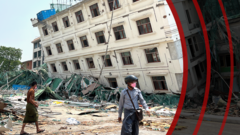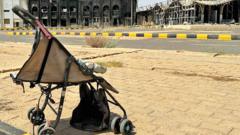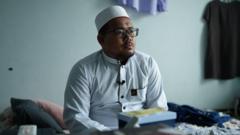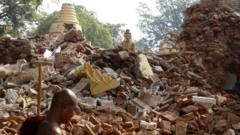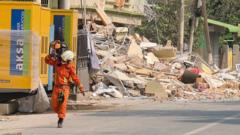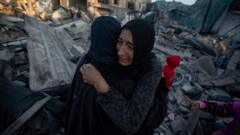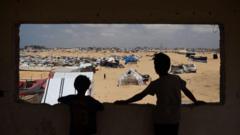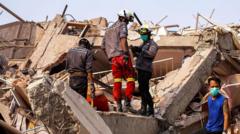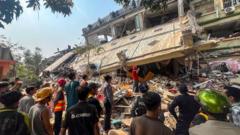Following the army's recent victory over the RSF, Khartoum is left severely battered and destructed, yet the residents experience a bittersweet sense of freedom as celebrations for Eid emerge amidst the chaos.
Khartoum Reclaims Its City Amid Destruction and Uncertainty
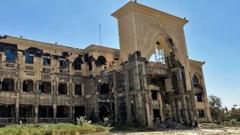
Khartoum Reclaims Its City Amid Destruction and Uncertainty
The dusty streets of Khartoum now echo tales of destruction as the Sudanese army regains control from the RSF, leaving behind a city in ruins.
The heart of Sudan's capital, Khartoum, has transformed into a scene of devastation as the army successfully reclaims the city from the paramilitary Rapid Support Forces (RSF). Weeks of intense urban warfare reverberate through the lifeless streets, where once vibrant commerce and governance thrived. The recent reoccupation, marking a pivotal point in a prolonged two-year civil conflict spurred by power disputes, raises questions about Sudan's future.
We ventured into the remnants of the city only days after the army's significant reclaiming of the presidential palace from the RSF, a crucial stronghold early in the conflict. Safety compromised, our journey revealed a stark landscape: debris and shattered glass blanketed once revered spaces; high ceilings draped in dust; and looted relics scattered throughout. The devastation is palpable, especially at the entrance to the presidential palace, where traces of violence lay embedded among broken structures and blood-stained steps.
The atmosphere lightened only slightly as soldiers revelled in their 'hero' status during Eid celebrations, buoyed by a feast delivered to the palace. Yet, the price of victory is steep, with the streets of Khartoum reflecting wholesale destruction. Amidst the rubble, haunting remnants of life linger, with unexploded ordnance and lifeless bodies highlighting the conflict's human toll.
A brief retreat to St Matthew's Cathedral offered a fleeting glimpse of tranquility amid chaos, its historical beauty largely preserved despite distressing incursions during shelling. Here, a soldier shared sentiments of survival, recalling the anguish faced by families during ceaseless fighting. Concurrently, scenes from diplomatic areas showcased RSF graffiti and battered properties, testifying to the desperate flight of international missions, once safe havens.
As Eid festivities dot corners of the city, locals emerge from a long shadow of despair. Their emotional rebirth contrasts sharply with haunting memories of violence. Many, like Duaa Tariq, a pro-democracy activist, find joy amidst the chaos, reflecting on a newfound lightness—despite the ongoing food scarcity and fears about the future. The optimism is palpable, but nagging questions remain: How will this shift in power affect civilian rights and freedoms? Will the scars of trauma heal?
Still, hope flickers as community kitchens serve warm meals to those celebrating for the first time in two years, as individuals cherish what little freedoms they can grasp. Elderly residents express an eagerness for recovery, envisioning a future where foreign investments may rebuild their war-torn land.
However, while celebrations spark within the battered confines of the city, the uncertainty about Sudan's future looms large. As discussions around humanitarian needs swell, acts of solidarity are countered by the daunting task of healing from immense psychological trauma—especially in children, who bear the brunt of horror.
In conversations, voices echo desires for peace, understanding the fragility of their newly regained freedom. With the RSF's stronghold shifting, attention turns toward the humanitarian crises exacerbated by war, revealing stark divisions and a country still wrestling with its identity amidst a backdrop of uncertainty.

